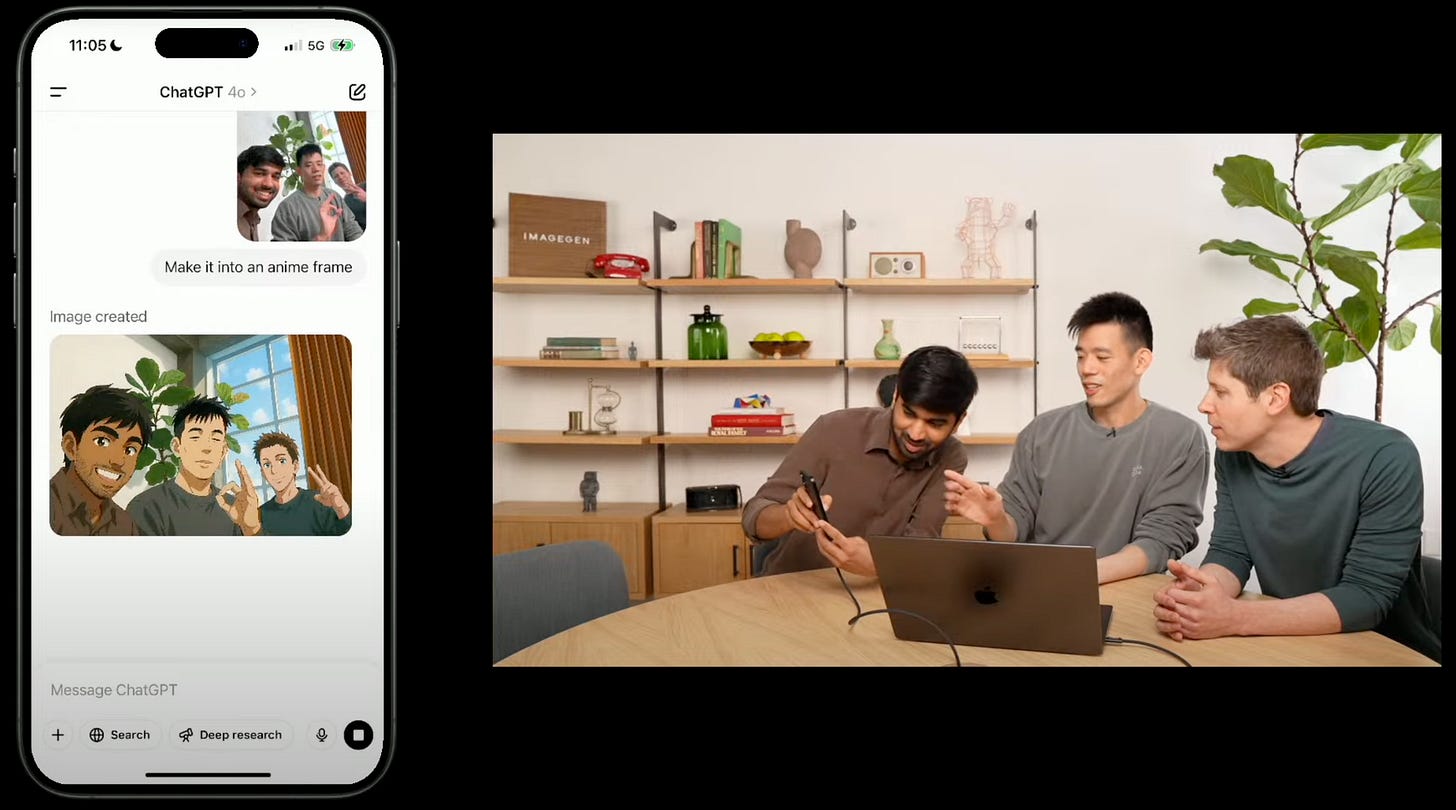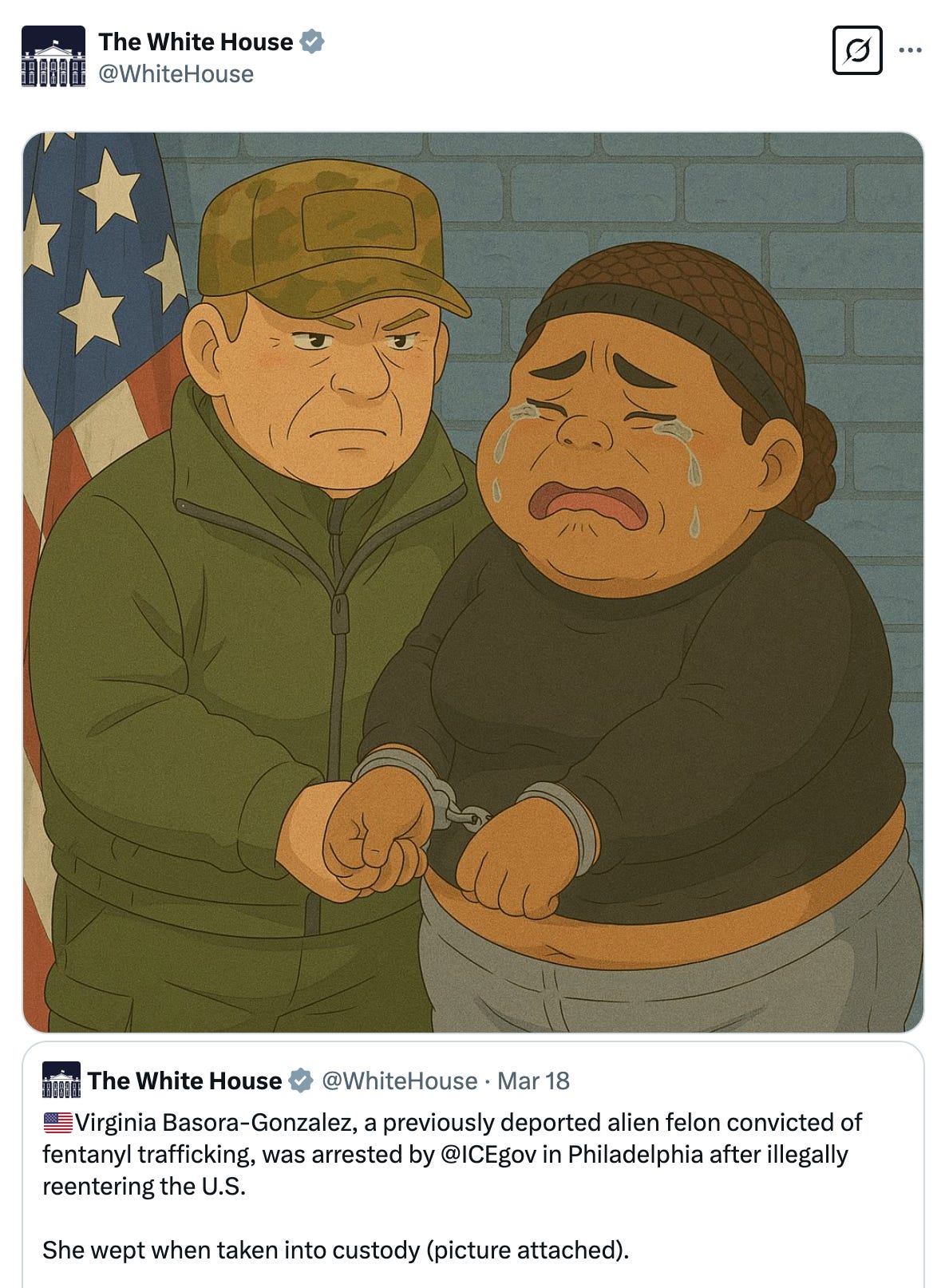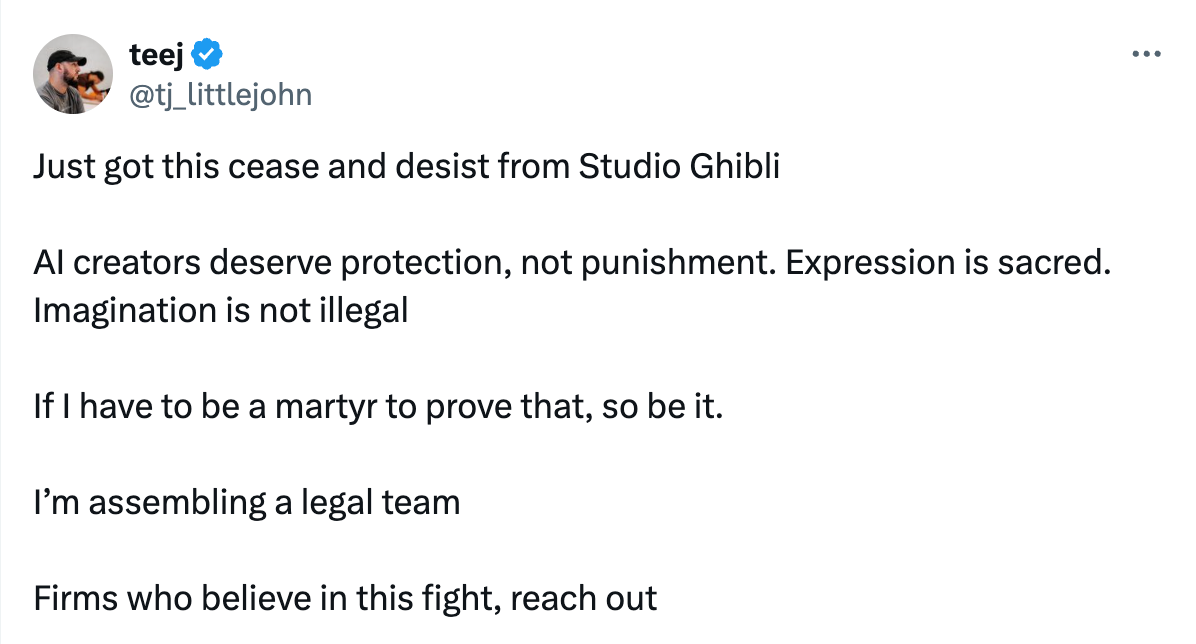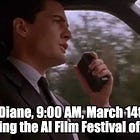Ghibli or Gibberish
やれやれ • YARE YARE
Don’t think I need to spend too many words on what happened, but here’s a short recap for my friends on LinkedIn. Basically, OpenAI updated their image generation feature, and the demo inadvertently started a trend to Ghiblify everything on Twitter.
Initially, it started with relatively cute use case of turning family pictures to Ghibli style, but then people started applying it to memes. It all went to shit starting there, culminating at The White House’s Ghiblification of deporting an alien felon.
Needless to say, lots of people hated it — you can read a more complete recap of the timeline, background and additional commentary on
’s blog post Everything is Ghibli.In this post, I’ll dive deeper on the legal complication with some additional thoughts.
Is this all legal
As the Ghiblification of Twitter continues, this Twitter user claimed that he received a cease and desist from Studio Ghibli. Although later (thanks to community note), we know that it’s only a growth hack stunt, it does beg the question — is this all legal?
It is clear that OpenAI has likely ingested Studio Ghibli’s work during its training process, but is Studio Ghibli getting paid for this? Likely no, as OpenAI has stated in its open letter to the Office of Science and Technology Policy, it believes that the U.S. should allow AI companies to train on copyrighted materials for free and without permission. In addition, this is all in the name of national security because Chinese AI companies will win the AI race, as they do not care about copyright laws.
However, the legal basis for OpenAI’s center claim is a legal doctrine called fair use.
Fair Use
Fair use, first formally codified in the Copyright Act of 1976, is a legal doctrine in the U.S. that allows for the limited use of copyrighted material without obtaining permission from the copyright holder. It is designed to allow the public to use creative works for purposes such as criticism, commentary, news reporting, teaching, scholarship, and research.
There are a couple key factors to determine whether something is fair use or not
The Purpose and Character of the Use
The Nature of the Copyrighted Work
The Amount and Substantiality of the Portion Taken
The Effect of the Use Upon the Potential Market
Note that this is not a check list as laws are up to interpretation. A landmark lawsuit around fair use is The Authors Guild v. Google Inc — in short, authors and publishers sued Google for copyright infringement over its digitization of millions of books for online search and snippet viewing. During the litigation, the following key factors were considered
The Purpose and Character of the Use: Google scanned the books mainly to provide information about the book rather than for online consumption
The Amount and Substantiality of the Portion Taken: Only snippets of the books showed up during the search result
The Effect of the Use Upon the Potential Market: Since only snippets showed up, Google’s action does not significantly impact the sales of the actual books. Moreover, it could contribute to sales as more people discover the books.
Hence, with all these factors considered, the courts ultimately ruled that Google’s action fell under fair use despite its commercial motivation. If we were to apply them to OpenAI
The Purpose and Character of the Use: OpenAI used Ghibli images in training so people might create images in Ghibli’s style. However, the liability would be on the users — if they Ghiblified their family album, they should be fine as it’s a completely different use case than what Ghibli Studio’s work was intended for. However, if they used OpenAI to produce a Ghiblified anime film, then they are in trouble because it’s the exact same purpose of Ghibli Studio’s work.
The Amount and Substantiality of the Portion Taken: Not sure, but with Lora you actually don’t need that many images to learn the Ghibli style.
The Effect of the Use Upon the Potential Market: OpenAI’s usage of Ghibli images do not directly impact Ghibli Studio’s business. The liability again falls on the users. If there’s a new studio that churns out hundreds of Ghibli style film per year, then that would not fly under fair use.
In summary, my take (not a lawyer) is that
OpenAI training on Ghibli images does indeed constitute as fair use, but the users of OpenAI might be subject to copyright infringement depending on the nature of their usage.
Closing Thoughts
I’ve said this many times and I’ll say it again
AI cannot replace taste, it can only amplify taste.
We’ll start seeing magnitudes more of garbage on our timeline, but I’d invite everyone to cut through the noise and see what AI can do when combined with artistry, taste and craft. If you are interested in seeing what’s possible with AI, check out my blog post that showcases the winners of the Austin AI Film Festival.
In the meantime, subscribe and make me feel needed. Stay tuned for my next blog post, in which I’ll share my interview with some music executives and how the music industry is thinking about AI and copyrights.








My anti-ghiblified statement: